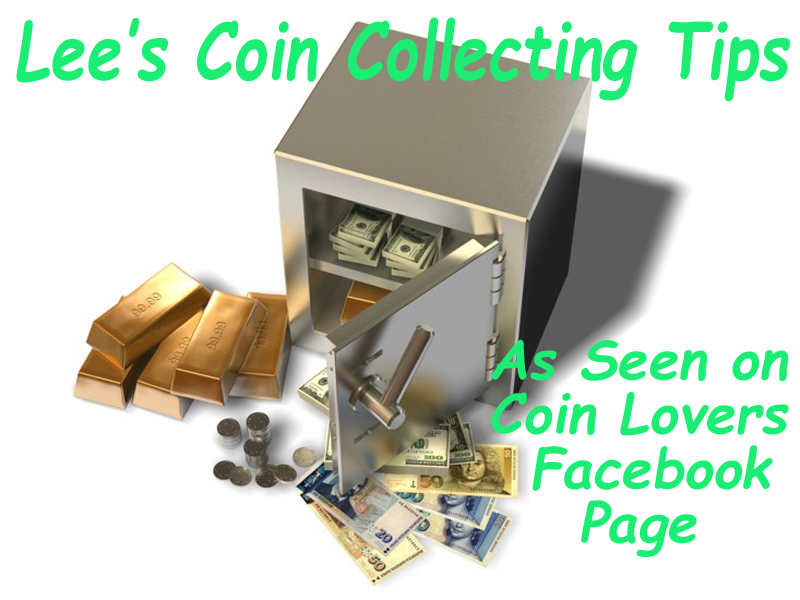

| search engine by freefind |
We would love to hear from you. Suggestions are also welcome.
To contact me, just click-on email below.
The Anti-Counterfeiting Educational Foundation (ACEF) is leading the fight against counterfeit coins and bullion. It also is the home of the Anti-Counterfeiting Task Force (ACTF). Their website is https://acefonline.org/.

According to their website, "The Anti-Counterfeiting Task Force (ACTF) was formally launched Jan. 6, 2017, under the authority of the Industry Council for Tangible Assets, with a primary mission to educate law enforcement authorities and policy makers and to make them aware of the rising threat of counterfeiting, to mobilize law enforcement to attack counterfeiters where they are most vulnerable, and to provide expertise and other resources in the investigation and prosecution of counterfeiters and those involved at all levels of their distribution networks."
The difference between the ACTF and the ACEF can be found under the FAQ tab in the website. You can sign-up for Counterfeit Alerts as I did, as well as report a counterfeit via the website's Counterfeit Report Form.
I strongly suggest that you check out the Anti-Counterfeiting Educational Foundation and Anti-Counterfeiting Task Force website and join the fight against counterfeit coins and bullion.
© 2022
When I was thinking about an easy was to do this, an experience in high school many years ago popped into my mind. Use a protractor.
I used to have a dozen or more in my home in NJ. Upon moving to NE over 20 years ago, they apparently were discarded. FYI, if you have a problem finding one locally, eBay has them. That's where I found mine.

The process is easy. Just two (2) steps.
- Place obverse of the coin or round so that it is centered on the vertical line on the center of the bottom of the protractor.
- Carefully flip to reverse, center again on the vertical line on the center of the bottom of the protractor and read the degrees on the arch of the protractor.
Lee's Tip: Place the coin or round on a small piece of paper that has been secured under or to the protractor and mark the center and sides for a more precise placement when you flip the coin/round to the reverse. Even better is a small mirror. Simple and accurate.
© 2022
I have tried many ways to determine the percentage of an off-center coin. I wrote an algebraic formula and an algorithm, just to name a couple. However, I knew that there had to be an easier way and that's what I found at Coin Talk - www.cointalk.com. So, here are the four (4) steps. You will need a digital caliper for this method.

- Measure, in millimeters, the diameter of the coin or round.
- Measure, in millimeters the distance of the off-center.
- Divide the off-center amount by the diameter.
- Convert to percent.
As they say, easy peasy!
The cited post can be found at https://www.cointalk.com/.../how-to-calculate-percent.../. Photo - eBay
© 2022
Every coin minted by the U.S. Mint costs a certain amount. Here's a quick review of last year's expense for non-silver Business Strikes
- Cent = 1.76 cents
- Cent = 1.76 cents
- Nickel = 7.42 cents
- Dime = 3.73 cents
- Quarter = 8.62 cents
- Half-Dollar = 6.58 cents*
- Dollar = 21.1 cents **
* Last time the U.S. Mint listed the cost in Budget along with other denominations was 2010.
** Per the U.S. Mint 2012 Annual Report.
© 2022
This photo from the U.S. Mint speaks for itself and is better than I could explain.

© 2022
I'll try to stay off my soap box on this topic, but I will say this: Do It Right or Don't Sell at All!
Okay, got that off my chest. Let's look at Lee's Way of Packaging Coins for mailing.
You'll need the following:
You need to have a PayPal account - Verified, AKA Business Account, is best when buying and/or selling coins. It protects both buyer and seller, plus it makes shipping easier.
Then I do the following:
NEVER
There may be exceptions to the last "NEVER". With an inexpensive coin, the buyer may only want to pay minimum shipping so a PWE (Plain White Envelope) without tracking may be used with the mounted coin placed inside a tri-folded sheet of paper. I strongly discourage this practice since letter- and legal-size envelopes go through automated sorting machines where the edge of the flip might get caught and tear open the envelope. I do my best to dissuade my buyer from that choice, but if he/she insists I stress that the responsibility is his/her own if the envelope rips and they don't receive the coin.
We all want good feedback and return customers, so always treat your customers even better than you expect to be treated when you're the buyer. Using a secure and common-sense packing process will give your first-time customers especially a great first impression of you. Remember - First impressions can only be made once.
Originally appeared in 2016 and has been updated.
© 2022
Melt Value is how much actual gold, silver, etc. is in the coin. To understand it, you first need to know about the weight system used to measure precious metals such as gold and silver.
Troy Weights: Ounce = 31.10 grams & Pound = 12 Troy Ounces
The Daily Spot (aka value) is the current Melt Value and is for one (1) Troy Ounce. A good source for the current Daily Spot is https://online.kitco.com/buy/gold-silver.html.
The value of gold and silver coins includes the actual Melt Value, which is based on the percentage of gold or silver in the coin. For our purposes, I'll only discuss U.S. Silver Coins, which come in four (4) percentages of silver content.
- 99% only include American Silver Eagle Dollars (1986-present)A nice source to find the current Melt Value of particular U.S. Gold and Silver coins, as well as Canadian Silver coins, Mexican Silver and Gold coins, and Gold Coins from France, England, and Switzerland is Coinflation.
Another point to consider when determining a coin's price is the collectability and/or rarity of a gold or silver coin, as well as its condition. Remember, the Melt Value is only the starting point in determining a coin's value. You should also consult the appropriate current edition of the "Red Book".
Originally appeared in 2016.© 2022
With silver hovering near the $21/troy ounce mark and gold around $1,800, it's time to buy what you can afford. For me, it's also time to "divest", aka sell, many of the coins in my collection that aren't silver or gold.
Right now all U.S. coins pre-1900 and early 1900s are holding their own, including the non-silver and non-gold issues. For selling these types of coins, local and regional coin shows are the way to go, as are the ever-growing number of Coin Collecting pages on Facebook.
I check both the spot prices of silver and gold every day at Kitco Metals, as well as the current values of my other coins using either the current Official Red Book (search it online too at ) or Official Black Book for Coins. You can find the Official Red Book for Coinsat most coin stores and shows, as well as online. The Official Red Book for Coins shows the "retail" or buyers price, while the Official Black Book for Coins has the "wholesale" or what buyers usually offer and is easily found online. They can be found for under $15 each.
Here's another tip, don't pay the first price you see or are told for any coins. I have yet to pay the "top" price for any coins I've recently bought. As a matter of fact, I've had dealers tell me that they "want my money" when they accept my lower counter-offers.
Right now, we're in a buyer's market for silver and gold, and a seller's market for other coins. Dealers treat many silver and gold coins and bars as bullion and usually charge $1.50-$2.50 above spot. I'm just saying…
Originally appeared in 2016 and has been updated.
© 2022
The short answer would be, "Yes". Dishonesty is becoming more and more common in the world. Unfortunately, its presence is also increasing in coin collecting.
Scams
This type of danger comes in all shapes and sizes. If you're asked to pay via PayPal Friends & Family option, run, don't walk away from the deal.
Counterfeits
China among other countries and individuals have been pushing some pretty good-looking counterfeits onto the US market. Be sure you know the seller and check over all coins and bullion that you buy. Even professionally graded coins have been switched out for counterfeits.
Theft
Coin shows are becoming a favored target for thieves. They have not only stolen inside the show itself, but also watch to find out which cars belong to dealers and then break into them.
Lee's Tips
Enjoy our hobby, just use your common sense and be wise with your purchases.
Originally appeared in 2016.
© 2022
The common trend for about a century or maybe even more, was that when the Stock Market went down, spot prices for precious metals went up, and vice versa. For at least the past 5-years, that has not been the case. The spot for precious metals has been mirroring the Stock Market. Currently, that is the trend.
To me, silver at about $21-22 and gold at about $1800 makes then in the buyers favor. Again, I caution, only invest what you can afford to lose part or all of it.
© 2022
Melt Value is how much actual gold, silver, etc. is in the coin. To understand it, you first need to know about the weight system used to measure precious metals such as gold and silver.
Troy Weights: Ounce = 31.10 grams & Pound = 12 Troy Ounces
The Daily Spot (aka value) is the current Melt Value and is for one (1) Troy Ounce. A good source for the current Daily Spot is https://online.kitco.com/buy/gold-silver.html.
The value of gold and silver coins includes the actual Melt Value, which is based on the percentage of gold or silver in the coin. For our purposes, I'll only discuss U.S. Silver Coins, which come in four (4) percentages of silver content.
- 99% only include American Silver Eagle Dollars (1986-present)A nice source to find the current Melt Value of particular U.S. Gold and Silver coins, as well as Canadian Silver coins, Mexican Silver and Gold coins, and Gold Coins from France, England, and Switzerland is Coinflation.
Another point to consider when determining a coin's price is the collectability and/or rarity of a gold or silver coin, as well as its condition. Remember, the Melt Value is only the starting point in determining a coin's value. You should also consult the appropriate current edition of the "Red Book".
© 2016
Coin Cleaning is a much-debated concept. The basic rule to follow is, "If you don't know it's value, don't clean it, or if you think it is valuable, don't clean it, or if you know it is valuable, don't clean it."
The five sure ways to ruin coins are:
- TouchingOne of the worst true stories I've heard involved a lady who called a coin dealer I know. She told him that she had found a 1909-S VDB Wheat Cent in some coins of her late father. My friend told her not to clean or polish it and that he'd be there in 20 minutes. When he arrived he found that the well-meaning lady had polished it with copper polish "to make it shiny and pretty". That rare $700-$2000 coin was now worth one cent.
Trust me there is no safe way to clean coins. My personal rules are to never, ever clean or polish a coin, and to always have on clean white cotton gloves when handling them.
© 2016
Every U.S, coin is made from a planchet (blank) that is struck by two Dies. What is known as a Die is actually a steel rod with a face containing the design, either obverse (front) or reverse (back).
The machine into which the Dies are placed is called a Coining Press, with a Top Die, aka Hammer Die, and a Bottom Die, aka Anvil Die. The Die names are self-explanatory as to what each does. However on the newer Coining Presses, the Dies are now positioned side-by-side, but the process remains the same.
Interestingly, but also sadly IMHO, with the leaps in technology, most of the Die Varieties that I and other Error Coin collectors enjoy will never appear again. About the only problem that the U.S. Mint cannot totally eliminate is the Doubled Die, which is caused when the Mint and/or Year is doubled due to a "doubling" on the Die itself that is transferred to the coin.
On a side note, no other type of true Doubled Die now exists, but there are other types of "doubling" that do occur. A topic I'll cover in a later Collecting Tip. In the meantime, educate yourself and be aware that not all advertised Doubled Die coins truly are.
© 2016
In all honesty, you really only need to have five (5) "tools of the trade" for Coin Collecting and they are:
- Magnifier or Loupe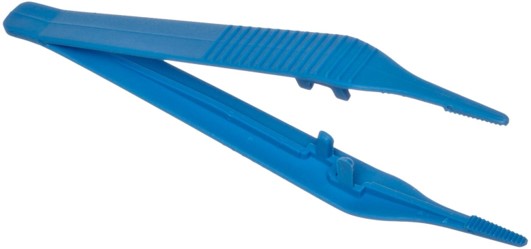 - Plastic Forceps
- Plastic Forceps
Additionally, there are optional items that you can invest in. I've divided them into three (3) groups and they are as follows.
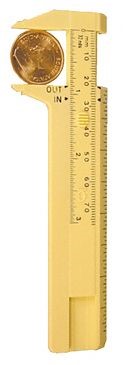 - Caliper
- Caliper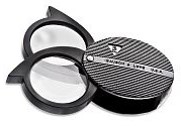 - Multiple Magnification Loupes
- Multiple Magnification Loupes - Headset Loupe Magnifier
- Headset Loupe Magnifier - Digital Gram Scale
- Digital Gram Scale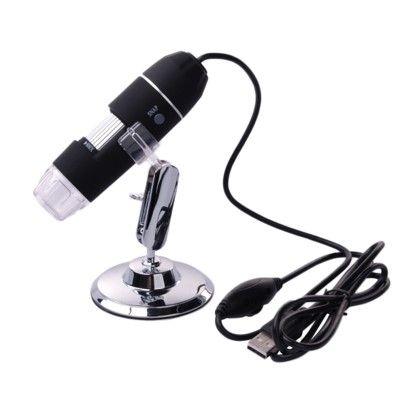 - Digital Microscope
- Digital Microscope
Your budget, eyesight, and physical limitations will help you determine what you actually need
.© 2016
Now that you've decided what to collect, you now have to decide how you're going to store and protect your collection. Let's take a look at what's available.
FLIPS
For coins, 2x2 inch flips are the least expensive to use. They come in various window sizes which fit every denomination ever made. They come in either cardboard or vinyl. The type I prefer are the cardboard type that you use staples to close. They are NOT air-tight. Also, be sure that the clear windows through which you can see the coin are Mylar rather than PVC. The latter can cause unwanted changes to coins.
AIR-TITES
As the name implies, this storage type is air-tight. They are made of archival grade acrylic and do not contain PVC. Air-Titescome in a large variety of sizes measured in millimeters (mm). Click here for lists of sizes. There are two varieties: Ring Type and Direct Fit.
BOXES & TUBES
Storage boxes are available for both flips and Air-Tites. They are even color-coded by denomination for flips. I use these for my extra/duplicate coins, art rounds, and art bars. Storage tubes are available for loose coins of various denominations.
ALBUMS & PAGES
They literally come in every shape, size, and color. You have to choose between those for unmounted coins, flips, and Air-Tites. Plus there are a variety of page types.
My personal preference is 1- to 4-inch loose-leaf binders. I have a huge supply of archival slide pages from the days before digital cameras which are perfect for 2x2 flips, which are the same size as mounted 35mm slides. They also can be used to hold the smaller sizes of Air-Tites.
You can also find pages for small type sets, professionally graded coins in slabs, etc. I keep a supply of pages for 4x6 inch and 5x7 inch photo, trading card (for small slabs), slab, and full-sheet pages. Be sure to use Mylar, rather than PVC pages.
DESICCANTS
One final piece of advice: Use desiccants - the small "envelopes" or "plastic containers" found in medications, etc. - to prevent damage by humidity. You can also buy larger sizes. I put one or two desiccants, depending on their size, in each storage box. Since I store my albums in sealable plastic bins, I put desiccants in the bins as well.
© 2016
Bag Mark
Coins can strike against each other and create dents when minted and transported in bags, etc. These are called "Bag Marks". Larger, heavier coins (such as half dollars or silver dollars) and coins made of softer metals (gold, silver and copper) are more inclined to these marks. Since proof coins are manufactured and transported with more care, it is not very common to find a proof coin with bag marks on it.
Blank
A flat disk of metal intended to become a coin but which has not yet been impressed with the coin's design. It's also known as a "planchet".
Brilliant Uncirculated
BU refers to a coin which has not been circulated and which still retains the majority of its original mint luster.
Sometimes "Uncirculated" (U) and "Brilliant Uncirculated" (BU)
Are used interchangeably. However "Brilliant" would not be applied to a coin which has significant defects impairing its eye appeal or which is lacking in luster.
Business Strike
This refers to a coin which was made to be circulated in everyday financial transactions.
Cameo
This is the frostiness of the raised portions (such as the device or the lettering) of some proof coins.
Circulated
Circulation can most often be detected on a coin by examining the highest points of the coin's device or the rim. When a coin is placed in a pocket and carried around for a few hours, its highest points inevitably rub against the cloth of the pocket and become slightly worn. This effect becomes more evident the longer the coin is treated in this way. However, any signs of such rubbing or wear are a definite indication that the coin has been circulated, no matter how briefly.
Cull
In coin grading, when a coin does not meet the usual minimum grading standards for that type of coin, it can be designated "Cull". This means that the coin has significant problems with it which make it ungradable. Examples of cull coins could include a wheat penny which is so worn that the letters on the coin cannot be made out, or a silver dollar with a hole punched through it.
Deep Cameo
The complete, uniform and heavy frostiness of the raised portion on some proof coins. See cameo for a discussion of the different levels of cameo and examples.
Device
The main image or design on either face of a coin. The device is usually raised from the field of the coin.
Die
This is a piece of hard steel rod which is used to stamp the image onto a coin blank. The die is engraved with the opposite image of what you will see on the resulting coin. Two dies are needed to make a coin; one for the obverse and one for the reverse.
Field
It is the flat surface of a coin from which the lettering, rim and other elements of a coin's design are raised.
Gem
In coin grading, a coin graded gem will look very nice and will have very few flaws and marks. The only grade higher than Gem is Superb Gem, which is assigned to coins which are nearly flawless.
Grade
The designation assigned to any given coin indicating its condition, eye appeal, luster and severity of defects (or lack thereof). It can be either a numerical assignment or a nominal word or phrase.
Key Date
A key date is a coin which, due to its scarcity or high demand, is more difficult to find. They usually cost much more than the other coins in the same series and are often the last coin(s) needed to complete a collection.
Luster
This refers to the amount of light reflected by a coin's surface.
Mintmark
A mark on the coin indicating which mint produced it. It is usually a single letter found on the obverse or reverse of the coin.
Numismatics
This is the study and collecting of coins, money, and tokens.
Numismatist
This refers to a student and collector of coins, money, and tokens.
Obverse
It is the front side of the coin, opposite of the reverse.
Planchet
A flat disk of metal intended to become a coin but which has not yet been impressed with the coin's design - Also called a "blank".
Proof (PR)
Refers to a coin which has been made using highly polished dies and with great care. Proof coins are not intended for circulation but are instead meant specifically for the collector to serve pristine examples of the coins made for the year.
Raw
This indicates that the coin is not certified.
Restrike
A restrike is a coin which was made later than the date shown on the coin.
Reverse
This is the back side of the coin, opposite of the obverse.
Rim
The part of either face of a coin which is raised all the way around the edge of the coin.
Semi-Key
A semi-key coin is one which is not common but which is not one of the scarcest coins of the series. They can be harder to find than common coins and will usually be more highly priced.
Sheldon Scale
The modern numerical grading scale used for grading coins. The scale was created by American numismatist Dr. William H. Sheldon in 1949. This scale has become widely known and firmly accepted as the standard for coin grading in the US.
Uncirculated
This refers to a coin which has never been used as money in everyday financial transactions.
© 2016
Following is a tip sheet containing all past and present Mints and their Marks.
P - Phila., PA 1793-Present© 2016
I'll try to stay off my soap box on this topic, but I will say this: Do It Right or Don't Sell at All!
Okay, got that off my chest. Let's look at Lee's Way of Packaging Coins for mailing.
You'll need the following:You need to have a PayPal account - Verified, AKA Business Account, is best when buying and/or selling coins. It protects both buyer and seller, plus it makes shipping easier.
Then I do the following:My motto is: Securely protect the coin(s) and tape the envelope the way you like to receive them.
NEVERWe all want good feedback and return customers, so always treat your customers even better than you expect to be treated when you're the buyer. Using a secure and common-sense packing process will give your first-time customers especially a great first impression of you. Remember - First impressions can only be made once.
© 2016
The most important thing to remember IMHO is that you won't get the retail price listed in The Red Book, Coin World Magazine, etc. So, forget that price.
You see, dealers will usually pay 70% of retail - a bit more if they have a customer already lined up for the coin(s). Use that as your guideline to being more realistic in your buying and pricing.
Check for Sold Listings of your coin(s) on eBay. Look at what's selling and for how much on Coin Lovers and other Facebook Coin Pages. BUT, don't try to compete with the same coin(s) against others on the same page.
Remember, you need to make your coin(s) attractive to potential buyers in the photos you take too. Out-of-focus and poor lighting photos will not help your sales potential.
Be honest - don't hide problems. Recently I posted a silver dollar from the Carson City Mint. The coin had very noticeable gashes on the obverse. So, I had to lower my price accordingly.
I've been collecting coins for over six (6) decades and I still ask for advice on pricing for some of my coins. Do you? If not, you'll have more failures than successes in selling coins. You'll be apt to want to price them higher than is realistic. We all have that tendency at times. Talking with more experienced sellers will help prevent unrealistic pricing.
As seller you want the highest price you can get - just as buyers look for bargains. Your goal should be to be flexible and realistic when determining your profit margin.
I'm not saying to literally give your coins away by underpricing, but rather study and gain knowledge each day so you know what will sell and at what price. Remember too that more experienced dealers are often an untapped resource.
Realistic prices and excellent customer service are what helps develop return-customer relationships with buyers.
© 2016
Professionally graded and "Slabbed" by Numismatic Guaranty Corporation (NGC), Professional Coin Grading Service (PCGS), or American Numismatic Association Certification Service (ANACS) are highly desirable by many collectors. For quite a few coin collectors Slabs are the "benchmark" or "gold standard" for our hobby.
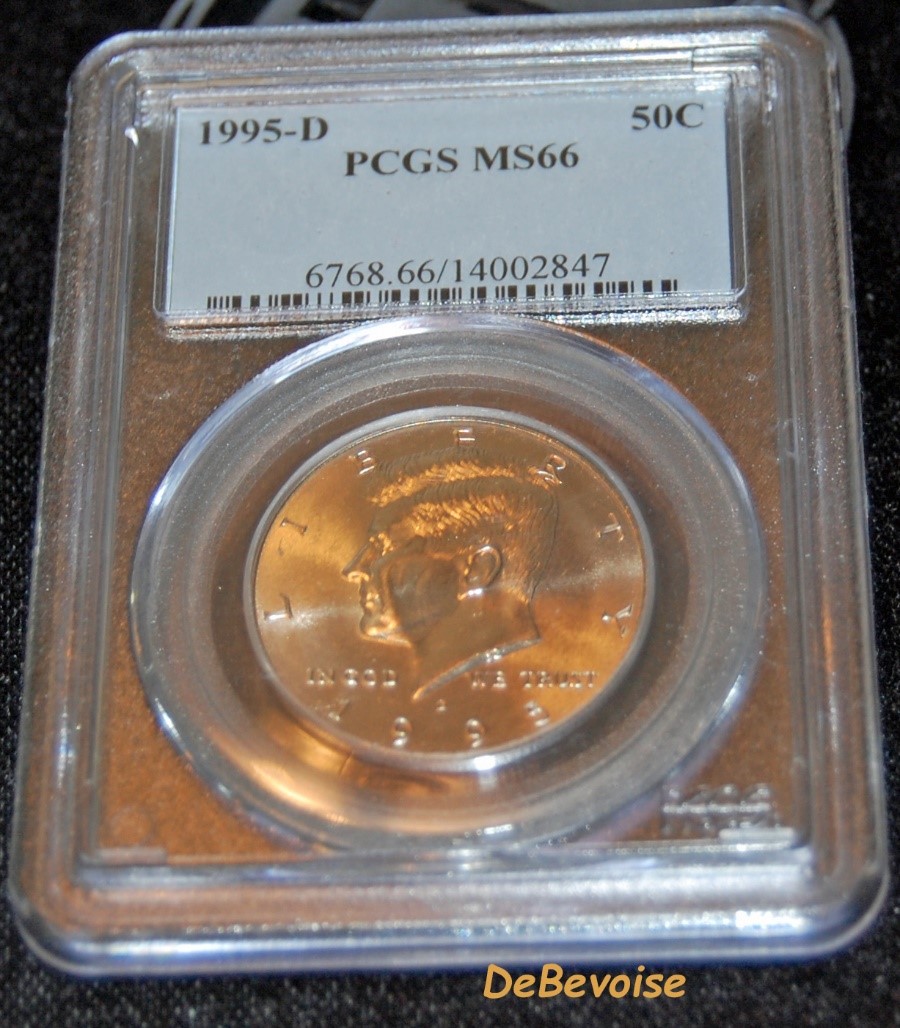
That's not necessarily true IMHO. I was told many years ago by another more experienced coin collector that I should collect the coin not the Slab. Wise advice indeed.
You see, even with certified, well-trained, highly experienced professional graders, it all boils down to the fact that the resulting certifications are but the opinion of a single person. Grading is a very highly debatable aspect of coin collecting. In other words, every collector has his or her opinion - right or wrong. It is the subjective view of a coin based on the 70-point Sheldon Grading Scale.
Some collectors even "crack" open a Slab, either to put in an album or even to resubmit to NGC, PCGS or ANACS with the hope of a higher grade.
My final and best piece of advice is, as I was told years ago: Consider the coin, not the Slab!
© 2016